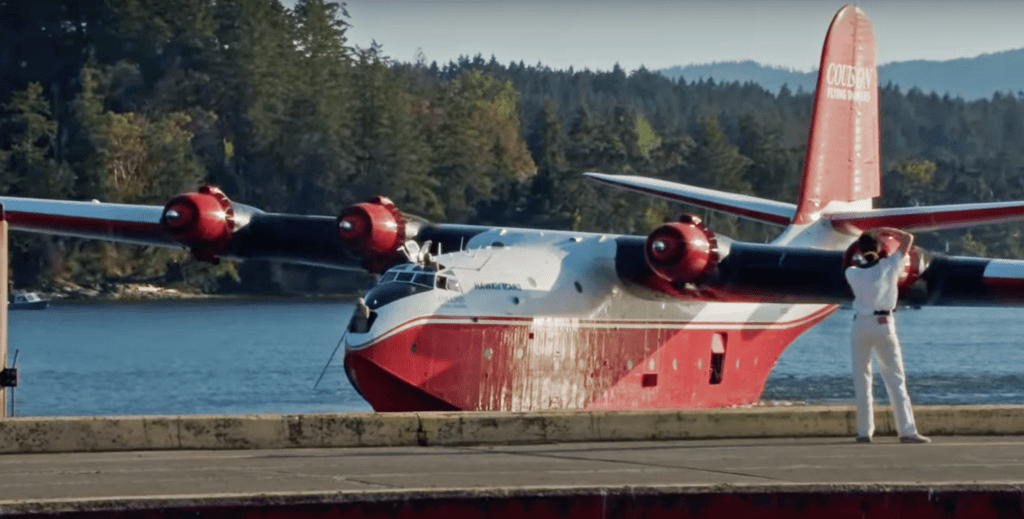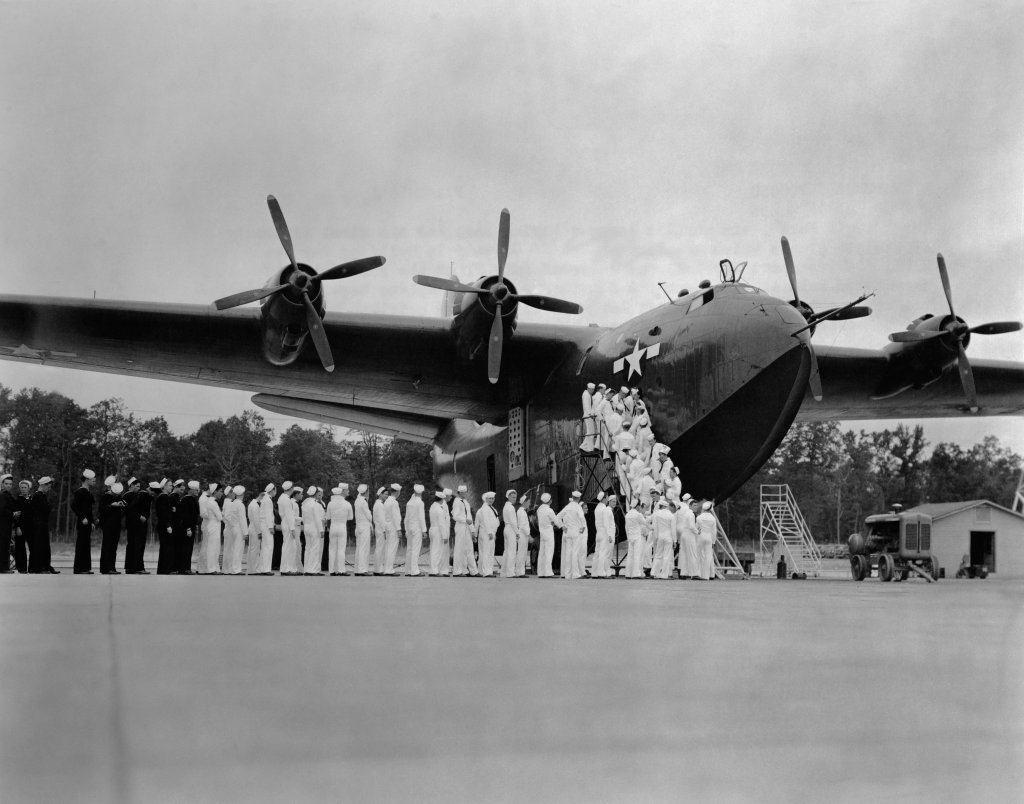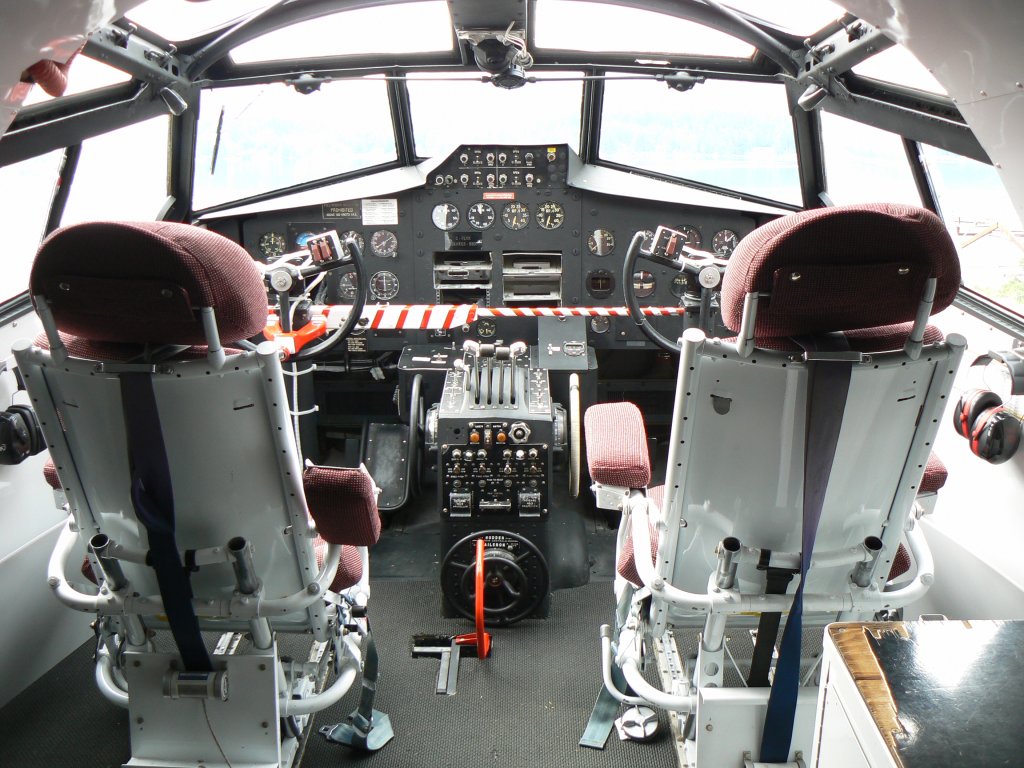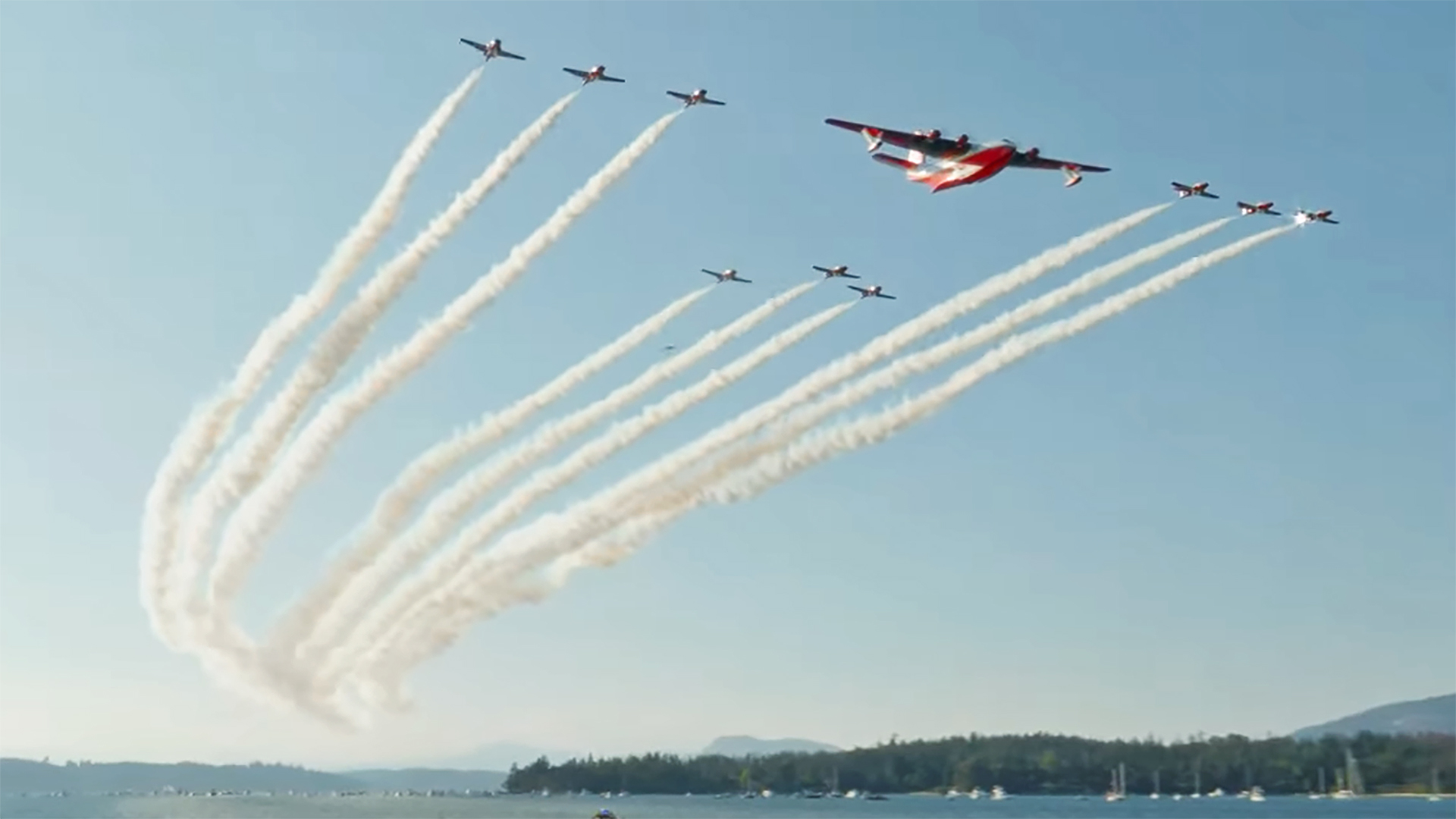One of the last two examples of the legendary Martin Mars flying boats, Hawaii Mars has made a spectacular final flight, taking it from its long-time home on Sproat Lake in British Columbia, Canada, to see out its retirement in a museum. Originally developed for the U.S. Navy as a patrol bomber and then reconfigured as a transport planned for use in the war in the Pacific, the huge aircraft found its niche as a water bomber but had not flown in this role for nearly a decade.


Thousands of spectators gathered on Vancouver Island yesterday to watch Hawaii Mars complete its flight from Sproat Lake in Port Alberni to its new home at the B.C. Aviation Museum in Sidney on Vancouver Island. For part of its roughly two-hour flight, which took it over various local communities, the flying boat was accompanied by the nine CT-114 Tutor jet trainers of the Canadian Forces Snowbirds demonstration squadron. Among others, the behemoth made fly-bys of Port Alberni, Comox, Campbell River, Powell River Nanaimo, the Gulf Islands, and downtown Victoria.

The Hawaii Mars finally touched down at Saanich Inlet, just northwest of Victoria, and will next be transported overland to the B.C. Aviation Museum.

At the controls of Hawaii Mars for its last flight was a crew from Harbour Air Seaplanes, a British Columbia-based airline that primarily operates de Havilland Canada floatplanes. In the pilot’s seat was Rick Matthews, with Peter Killin alongside him.
“It’s kind of sad that it’s the end of the story,” Killin told reporters. “It’s a new chapter coming… it’s going to be good; people will get to see it.”
Killin has more than a thousand hours on the type and both pilots have flown the Mars on firefighting missions on behalf of Coulson Aviation, its last operator.
A video shows the Hawaii Mars returning to its mooring buoy on Sproat Lake in July, eight years since its previous last flight:

The Hawaii Mars had been used to fight fires in British Columbia for more than half a century after it was purchased and appropriately modified by the local forestry services. Coulson acquired it in 2007 and used it in the same capacity until 2015. The aircraft was put up for sale the following year, as we recounted at the time. The company confirmed earlier this year that it would donate it to the B.C. Aviation Museum, after obsolescence finally caught up with the veteran water bomber. As well as rotary-wing aircraft, Coulson today operates adapted C-130 Hercules and Boeing 737 aircraft as water bombers.
“It’s bittersweet to say goodbye,” Wayne Coulson, Coulson’s CEO told CBC News.
Beginning in September, visitors to the museum will be able to look at the water bomber as the centerpiece of a new wildfire exhibition.
A video shows tests on the water, including high-power runs, last month, in preparation for the final flight:

“This is a once-in-a-lifetime event,” said Steve Nichol, president of the museum. “We’re going to have it open every day for the public, just to see what it was like to be inside the Martin Mars. I think people will be fascinated by it.”
There’s no doubt that the Martin Mars is a fascinating aircraft.
With a wingspan of 200 feet and a length of more than 117 feet, the Mars — in its ultimate configuration — tipped the scales at 165,000 pounds at its maximum takeoff weight. It was powered by four Wright R-3350 Duplex-Cyclone radial engines, each producing 2,500 horsepower.

The Mars flying boat was originally designed prior to World War II to meet a long-range patrol bomber specification, as the XPB2M-1, and was first flown as a prototype in July 1942. The demands of the war in the Pacific saw the prototype adapted to become a transport in late 1943, leading to a production run of five JRM-1s and a single JRM-2 that featured an increased gross weight and more powerful engines. Orders for a further 15 aircraft were canceled and subsequently, the JRM-1s were also brought up to the same standard, becoming JRM-3s. In the event, the wartime use of the monster transports was strictly limited.
Nevertheless, the Mars was the largest flying boat ever operated by the Navy and, among its feats, it demonstrated the ability to haul a 20,500-pound cargo from the Pacific Coast to Hawaii, a distance of 4,700 miles, which the prototype covered in 27 hours and 26 minutes. On another occasion, during a mission in May 1949, one of the production ’boats carried a total of 301 passengers, plus a crew of seven, a record at the time. The first two Mars were scrapped, while another sank after an engine fire off Oahu, Hawaii, in 1950.

In 1959 a consortium of Canadian logging companies acquired the four surviving Mars aircraft from the U.S. Navy at a cost of $100,000 and converted them for fighting forest fires.
Once adapted to work as a water bomber, the Mars had the capacity to carry more than 6,000 gallons of water, scooped up as it skimmed over the surface of a lake. Configurations differed slightly, but in the Hawaii Mars water was contained in four separate tanks accommodated in the massive hull; the process of filling the tanks took around 15 seconds. The water was then dropped over an area measuring around 600 feet long and 250 feet wide, enough coverage to often deal with smaller blazes in a single pass.

In Canadian service, one of the Mars was lost in a fatal crash in 1961 while another was destroyed on the ground by a typhoon only a year later.

By the beginning of the 21st century, the two surviving Mars —Hawaii Mars and Philippine Mars — were still being used as water bombers, but were offered for sale in 2001, Coulson snapping them up in 2007.
It is estimated that, over the course of its service life, Hawaii Mars alone dropped around 50 million gallons of water on wildfires, making it, by Wayne Coulson’s reckoning, the most effective firefighting aircraft in history.
In 2015, Hawaii Mars also had an interesting cameo role as a training aircraft for Chinese pilots. Under a contract from the International Test Pilots School, the Chinese contingent got valuable experience flying a very large flying boat, to help with the development of China’s AG600, an aircraft you can read more about here.

In April this year, it was announced that sister aircraft, Philippine Mars, will be acquired by the Pima Air and Space Museum in Tucson, Arizona, and will be put on permanent display there. It is due to be flown there later in the year.
While the curtain has now come down on the career of Hawaii Mars, enthusiasts will therefore have one more chance to see one of these mammoth flying boats take to the air before they are finally consigned to history.
Contact the author: thomas@thewarzone.com
